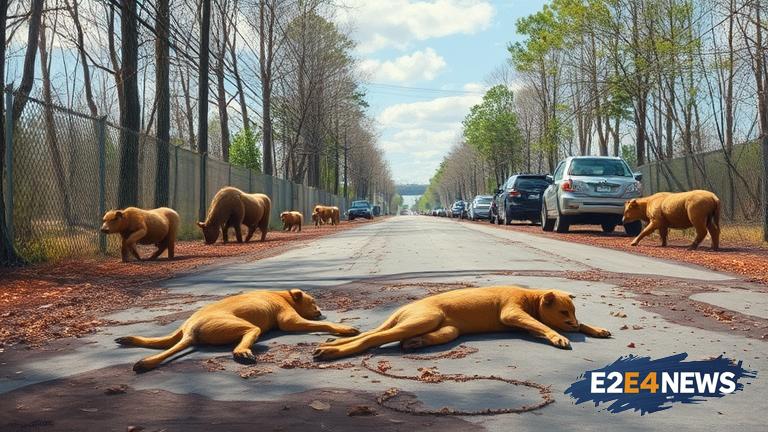The state of South Carolina has witnessed a significant rise in animal crashes, with a substantial number of roadkill incidents reported in recent years. This growing concern has sparked debates about the effects of urban development on wildlife habitats and the need for improved road safety measures. As urban areas continue to expand, natural habitats are being destroyed, forcing animals to venture into human-dominated landscapes in search of food, shelter, and mates. The resulting increase in animal-vehicle collisions poses a significant threat to both human and animal lives. According to data from the South Carolina Department of Transportation, the number of animal crashes has been steadily increasing over the past decade, with deer being the most common species involved in these incidents. The majority of these crashes occur during dawn and dusk when animals are most active, and the likelihood of accidents is higher in areas with high vegetation and wildlife activity. The rise in urban development has led to the fragmentation of natural habitats, making it difficult for animals to migrate and find suitable habitats. This has resulted in an increased number of animals being forced to cross roads, leading to a higher risk of accidents. Furthermore, the lack of effective wildlife crossing structures and inadequate road lighting has exacerbated the problem. In response to this growing concern, wildlife experts and conservationists are calling for the implementation of measures to reduce animal-vehicle collisions, such as the construction of wildlife bridges and tunnels, and the use of advanced technologies to detect and deter animals from crossing roads. Additionally, there is a need for increased public awareness and education about the importance of wildlife conservation and the risks associated with animal-vehicle collisions. The South Carolina Department of Natural Resources has launched initiatives to study and mitigate the effects of urban development on wildlife habitats, including the creation of wildlife corridors and the restoration of natural habitats. However, more needs to be done to address this complex issue, and a collaborative effort from government agencies, conservation organizations, and the public is necessary to develop effective solutions. The economic and environmental impacts of animal-vehicle collisions are significant, with estimates suggesting that these accidents result in millions of dollars in damages and losses each year. Moreover, the loss of wildlife can have long-term consequences for ecosystem health and biodiversity. In conclusion, the rising number of animal crashes in South Carolina is a pressing concern that requires immediate attention and action. By working together to develop and implement effective solutions, we can reduce the risk of animal-vehicle collisions and promote a safer and more sustainable coexistence between humans and wildlife.
